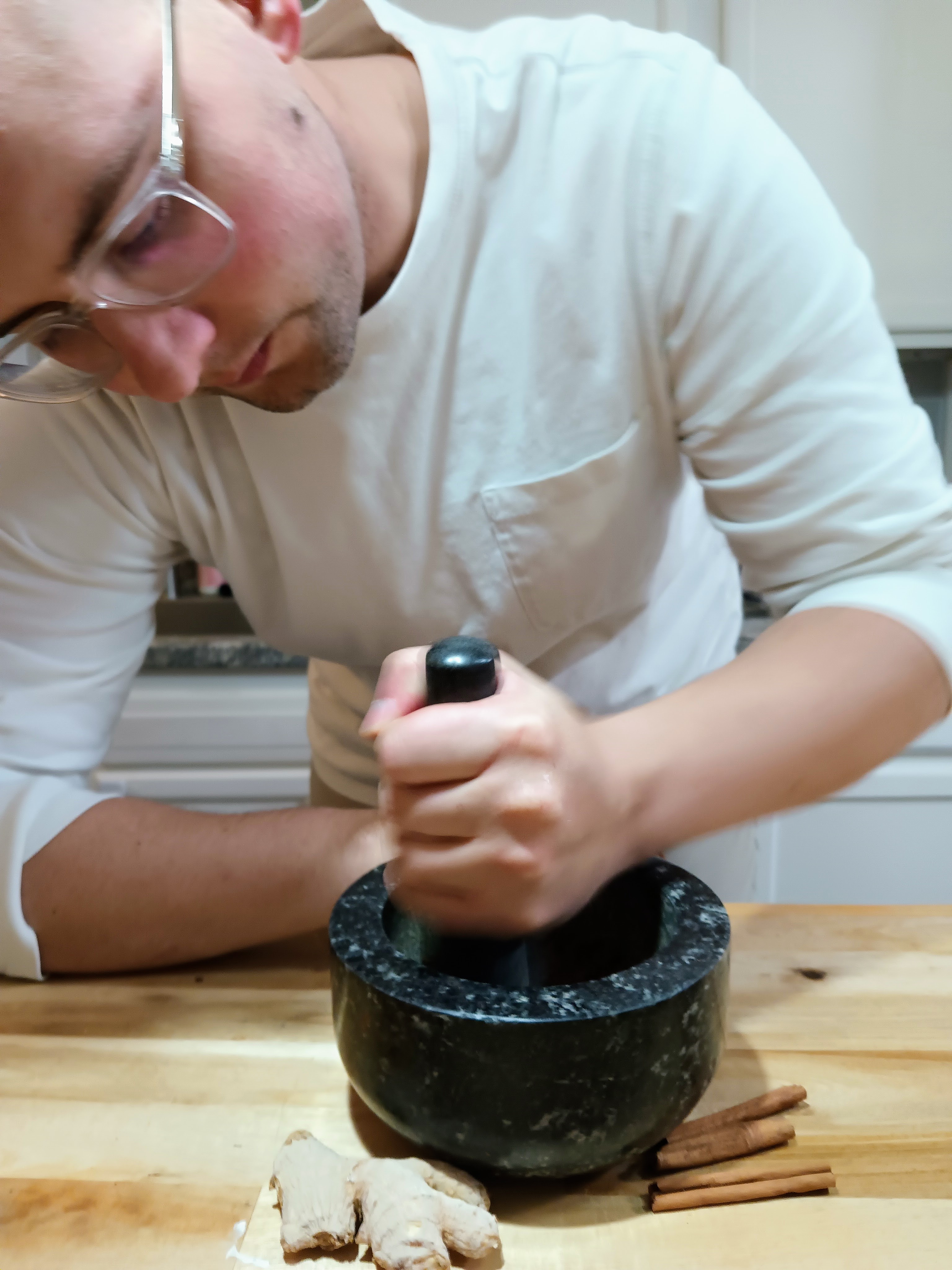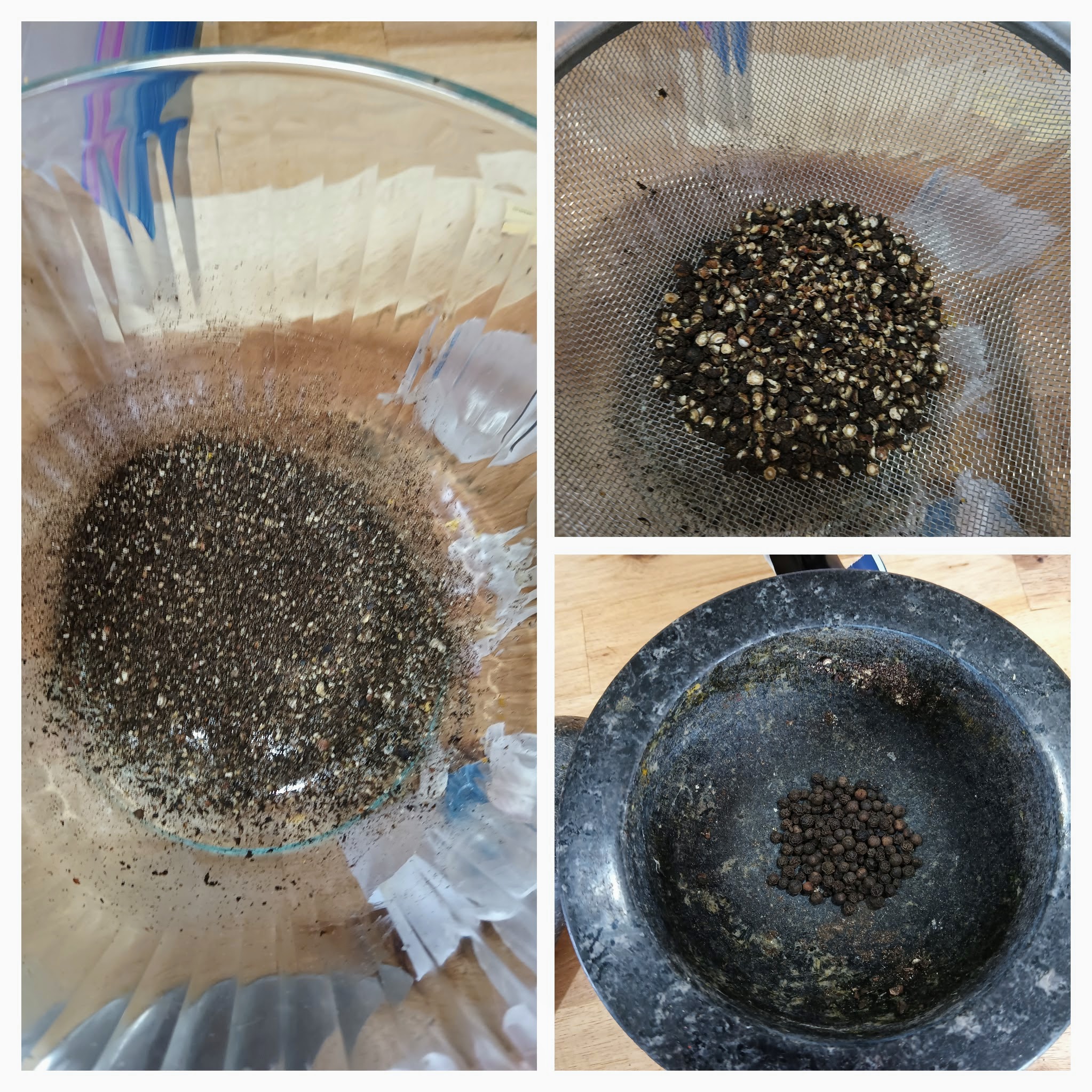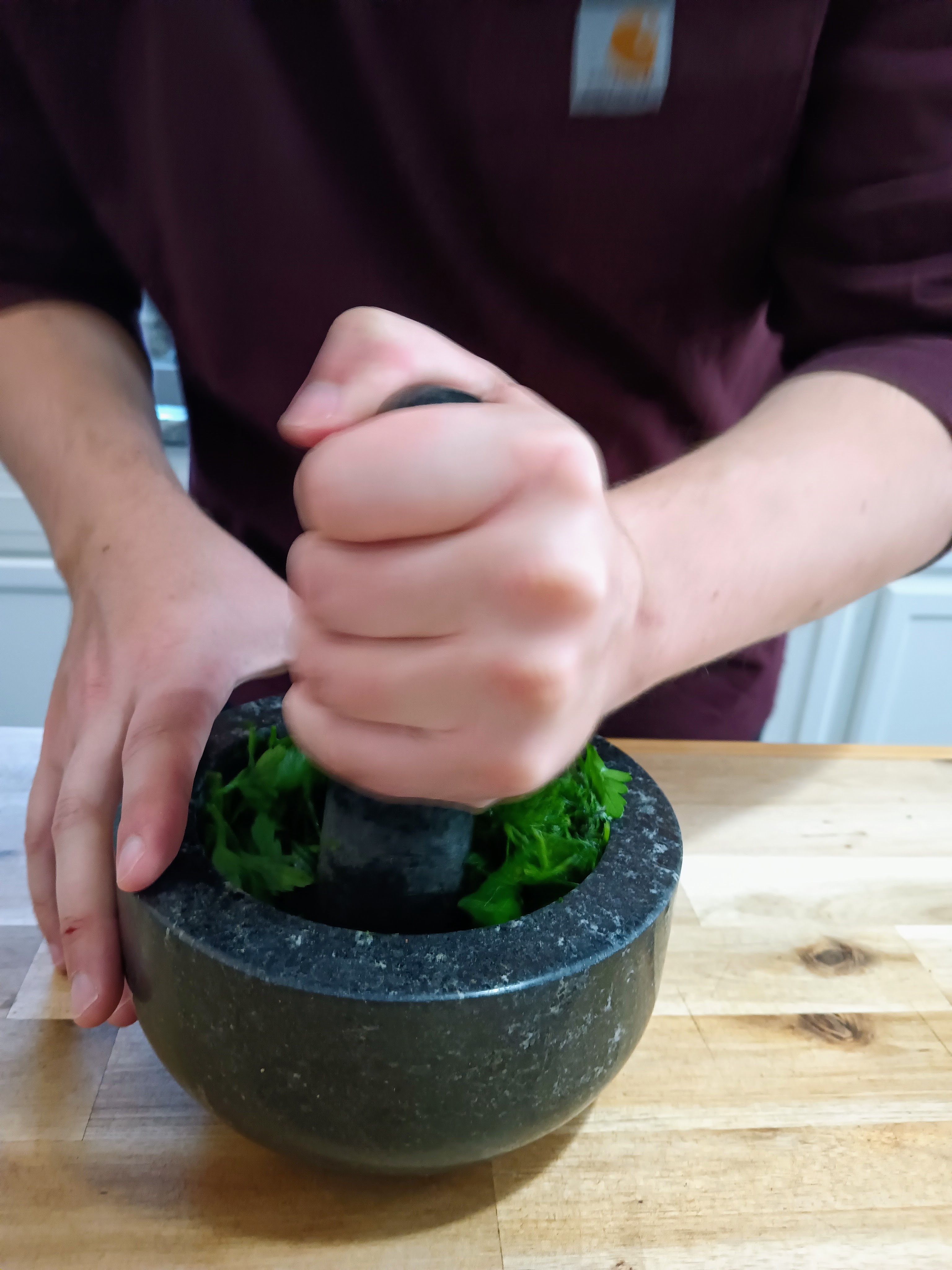The Humble Hero: Why Every Kitchen Needs a Mortar and Pestle

A few weeks ago, our lovely Alison wrote an article on some tips for using the mortar and pestle in your kitchen. I thought this was an awesome article because the advice was well said, it was sent in by one of our readers, and it highlighted one of the most underrated kitchen tools we have.
Even with my fancy blender, immersion blender, and food processor, I use my mortar and pestle several times every week. Because of this, I wanted to submit my two cents as well. This is why every kitchen needs a mortar and pestle.
The Mortar and Pestle Unlock Unique Flavor and Texture
Grinding ingredients with a mortar and pestle releases essential oils and aromas that can significantly enhance the flavor of your dishes. When you’re dealing with herbs, this can’t be reproduced by a blender. The blades of a blender merely chop your herbs super finely, cutting the cells into little pieces. But your mortar and pestle absolutely annihilate the cells of your herbs, releasing their oils and aromas to a much greater degree. With the mortar and pestle, you get a truer flavor.
The process is also highly customizable. At times I’ll grind my spices so finely that an electric spice grinder could never reproduce it. At other times I merely crack my peppercorns in half and use them to make an amazing crust for my meat.
The Mortar and Pestle are Perfect for Spices
If you’ve read my article on pumpkin spice, you know that I take spices super seriously. I don’t only like to toast and bloom them; I also like to precisely control their grind. Nothing makes your kitchen smell quite as good as toasted spices pulverized in your mortar and pestle.The Mortar and Pestle are Easy to Clean and Maintain
Compared to some electric kitchen appliances, mortars and pestles are relatively easy to clean and maintain. Their simplicity makes them a practical choice for those who prefer efficient and fuss-free kitchen tools.The Mortar and Pestle are Space-Saving and Portable
Compared to some electric kitchen appliances, mortars and pestles are relatively easy to clean and maintain. Their simplicity makes them a practical choice for those who prefer efficient and fuss-free kitchen tools.The Mortar and Pestle Make Cooking Fun and Meaningful
Let’s be real. In the Cook’n family, we don’t just love to eat. We love to cook. And using a mortar and pestle is a straight shot of happiness to the cooking experience. I feel connected to my cooking when I take a minute to manually grind my spices and crush my herbs.A mortar and pestle transcends the mere food prep; it is a connection between the cook and the ingredients. In an era dominated by modern conveniences, the tactile engagement with these simple tools reminds us of our origins. As the pestle grinds against the mortar, there's a sensory dialogue with the food—each motion, each aroma released, speaks to us.

This manual process demands a certain intimacy with food; it's not just about what goes into the dish but about how it transforms under your pressure and movement. The cook forges a deeper understanding and appreciation for the raw materials that form the basis of every meal.
The Mortar and Pestle are Meditative
Cooking with a mortar and pestle extends beyond the immediate task at hand; it's a journey into the traditions and histories of culinary arts. These tools have been companions in kitchens across cultures and epochs. By adopting them in our own kitchens, we become part of this timeless narrative, connecting with the countless hands that have wielded the pestle before us.In the whir of modern life, where meals can be hastily assembled, the mortar and pestle invite a slower, more deliberate pace. They encourage a pause, a moment to savor the process and reflect on the transformation occurring in the mortar. This intentional approach to cooking doesn’t just enrich the flavors of the dish; it also enriches the cook's relationship with the kitchen.
I hope you’ve found this article inspiring. Please drop a comment and let me know about your mortar and pestle journeys. And if you need some motivation to get started, here’s a recipe.
Matthew's Spicy Pomegranate and Pomegranate Guacamole
This guacamole is the perfect marriage of acidic zing and creamy mouthfeel. To get the most out of the garlic and herbs, this recipe is best prepared in a mortar and pestle. If you do not have one, go get one. If you don't feel like getting one today, you can make this with a fork and a mixing bowl, but it'll be a little harder to incorporate the garlic. One thing this recipe doesn't need is more oil. I've seen recipes that call for mayonnaise, olive oil, or vegetable oil. Do you realize how fatty avocadoes already are? The last thing you need is more oil. Instead, you want to use the natural fattiness of the avocado to complement your herby ingredients. Fat carries flavor remarkably well, so when we layer acidic and herby components, the avocado makes them sing.
Ingredients:For the spicy pomegranate
1 whole, fresh pomegranate (pre-seeded pomegranate is not ideal because they often taste like turpentine when combined for this recipe)
1-2 fresh jalapeno chiles (You can omit this if you don't like spicy food but still want the pomegranate zing)
1/2 cup white vinegar
1/2 cup filtered water
1 tablespoon cane sugar
1 pinch salt
For the rest of the guacamole
1-2 limes (depends on how acidic you like your guacamole)
1/4 orange
1/2 white onion
1 pinch sugar (optional)
1 clove garlic
6 stalks cilantro
2 avocados
1 large pinch salt
1/4 teaspoon ground allspice
Directions:
1. Cut open and de-seed your pomegranate. If you have an easy way to do this, find me and let me know. Of all the methods I've tried, I've finally settled on just ripping the thing apart and pulling the seeds out with my hands.
2. Thinly slice your jalapeno. De-seed it if you want (by the way, it is a myth that seeds are the spicy part of a pepper. In truth, the spicy part is the membranous white stuff that HOLDS the seeds).
3. Place your pomegranate seeds and jalapeno slices in a glass jar. Pour all the other ingredients over the top. They should be completely submerged in brining liquid.
4. Stir the brining liquid to dissolve the salt and sugar, then cover the jar and let it sit for at least twenty minutes. However, since this is now a pickled ingredient, it will last for a long time in your fridge, and you can use it as a garnish on its own or combine it with other recipes in the future.
For the pomegranate guacamole:
1. Finely dice your onion.
2. Place your diced onion in a glass bowl, and squeeze your lime and orange juice over it. Stir the onion around to get as much of it covered in citrus juice as possible.
Note: the sugars and acidity of the citrus will break down the volatile compounds of the onion and reduce its pungency. This will keep the onion from overpowering the guacamole and prevent you from getting onion breath.
3. As an option, mix a pinch of sugar with the onion. This isn't to make the guacamole sweeter, it'll just further reduce the pungency of the onion. I tend to skip this step unless I'm sharing my guacamole with someone who struggles with onion.
4. In your mortar, pulverize your garlic until it's a fine paste. You can sprinkle some salt over it to grind it even more coarsely.
5. Cut the stalks off of your cilantro. Add the stalks to your mortar and grind them with the garlic. Once they've released their juices, remove the stringy stalks from the mortar and discard them.
Note: if you don't have a mortar and pestle, you'll need to manually mince the garlic and cilantro stalks. Try sprinkling some salt over the garlic and cilantro and using the side of your knife to pulverize them. This won't be as effective as the mortar and pestle, but it'll help to shred the cell walls of your ingredients to release more herbiness.
6. Cut your avocadoes in half, remove the pit, and scoop them whole into the mortar. Use the pestle to grind the avocado down and gradually mix it with the garlic-cilantro paste. Continue this process until the avocado has reached your desired consistency (I like to leave some chunks of avocado for texture).
Note: DO NOT stab the pit of the avocado to remove it. That's a really good way to stab yourself in the hand. Whenever I've watched an expert (e.g. the head chef of a Mexican restaurant) de-pit an avocado, they always just squeeze the avocado and pinch the pit out with their fingers.
7. Once your avocado is incorporated and at your desired consistency, set aside the pestle . Add your onion and citrus mixture to the mortar.
8. Spoon some spicy pomegranate into the mortar on top of the citrus and onion.
9. Using a rubber spatula, gently incorporate the pomegranate and onion. Scrape the sides of the mortar as you work to ensure you've fully incorporated the garlic-cilantro paste.
10. Add salt and additional pomegranate to your preference, sampling as you go. Be careful not to eat the entire thing while hunched like a raccoon over your mortar.
11. As a final garnish, add the cilantro leaves. You don't need to mix them in.
Note: whole herbs benefit a lot from bruising. Roll them into a bunch, place them on the countertop and pound them once with your fist. This will release a lot of herby notes.
Serve directly in the mortar with good tortilla chips or with thinly sliced and salted cucumber.
Recipe formatted with the Cook'n Recipe Software from DVO Enterprises.
 Matthew Christensen
Matthew Christensen
Weekly Newsletter Contributor since 2023
Email the author! matthew@dvo.com
- www.bodyfusion.com
- www.islandinthenet.com
- www.myketokitchen.com
- www.pexels.com
